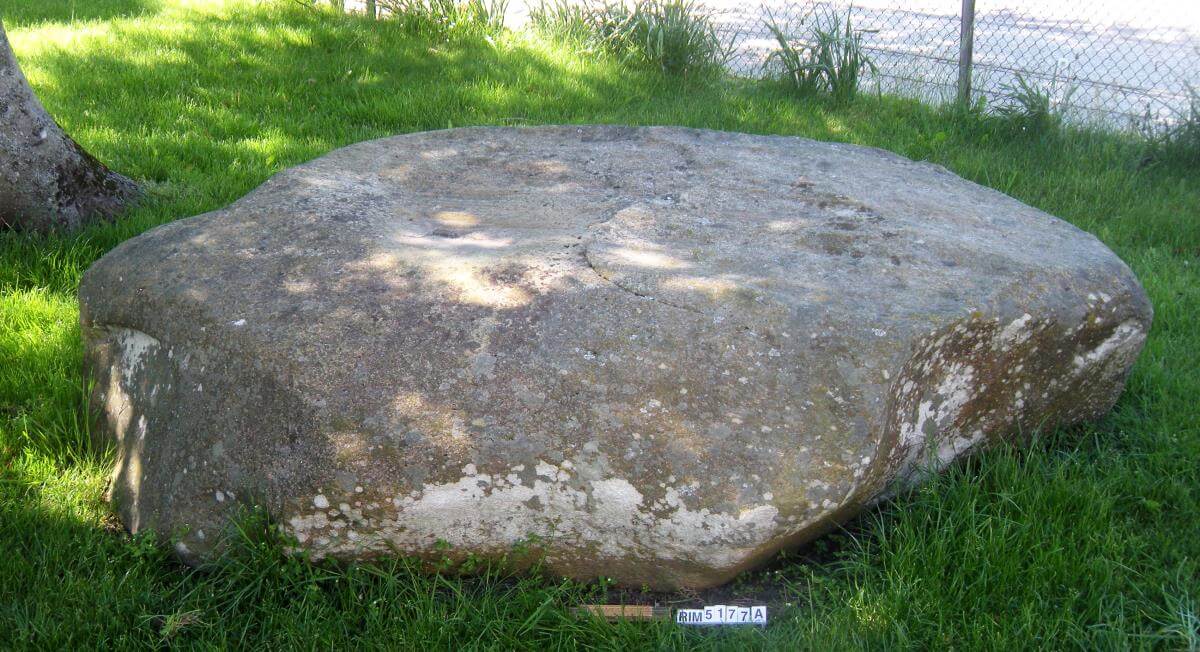The reunification stone in Ringkøbing
After reunification in 1920, more than 600 reunification stones and memorials were erected in Denmark, one of them in Ringkøbing.
In Ringkøbing, it was decided that a memorial was needed. A number of the town's associations agreed that voluntary contributions should be used to erect a stone nozzle on a mound at the northern entrance to the town. And on a square by I.C. Christensens Allé by Nygade, an artificial mound was erected.

The first problem arose when a lintel stone for the artificial nozzle had to be found. In Torsted, the farmer Kr. Kristensen had offered a free stone, but the stone was too far into the heath, so it would be too expensive and too difficult to move it. Instead, the trip went to Muldbjerg, where farmer Andreas Sand had come across a very large stone. The 6-ton stone was approved and the work of moving it began. After it was lifted out of its hole with a crane, it was placed on a block truck. It was then rolled on rails about 1 km to the Muldbjerg-Hee road, where a truck was waiting for it. The stone came to Ringkøbing in April 1921.
Now a new problem arose: what should be written on the stone?
The case turned into a farce. And although the stone nozzle was ready, no unveiling was ever organized. Now there was just a stone nozzle.
Valdemar Lange, Ringkøbing's joker and hardware store owner, wrote a song for the "Løverdagsklubben" in Ringkøbing in the early 1920s:
I wonder if the Reunification Stone of eternal rest has been laid?
Yes, sorry to ask Mr. Editor.
For if this should be the intention of the Committee,
which inscription I must then propose:
"Underneath lies a good idea of the first kind;
Its life was very short, for it passed away too soon."
Time passed and the stone was not inscribed.
When the road and viaduct system in Nygade was to be extended in 1960, the Reunification Memorial was removed and the lintel moved to Ringkøbing Museum.
On the 100th anniversary of the Reunification, it was finally time for the stone to have its say. But the centenary of Reunification was marred by Covid-19 and the subsequent pandemic, and once again the stone had to wait.
But 100 years after the stone arrived in Ringkøbing, in 2021, it succeeded! The large stone was once again given three stone supports and now stands in Ringkøbing Museum Gardens like an ancient nozzle. The stone has also finally got its inscription. And what could be more appropriate than Valdemar Lange's words from the early 1920s:
Under this rests
a good Idea of the first
Black; its life was
very briefly, because
early it passed away










